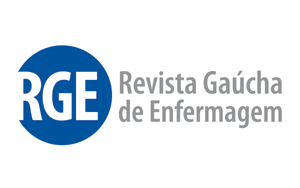The control group received regular care, which consisted in standard hospital care: orientation and diminution of environmental stimuli, such as noise and lighting. This care was provided by general practitioners, specialized physicians, nurses, and support personnel. The members of the intervention team did not provide services to the patients who were in the control group and thus received regular care.
However, the same group of physicians and specialists, nurses and support personnel, and the resident physicians provided regular care to both groups.
|
The intervention group was also treated with the multicomponent nursing program. For the interventions, a calm and private environment was formed by closing the device to enter the cubicle (doors, curtains), thus providing privacy. Two previously trained nurses carried out the intervention daily, starting when the patient entered the study and ending when they left it. The intervention lasted for nearly 15 minutes. Below, there is a description of the activities carried out: COGNITIVE STIMULATION
-Time and space orientation: At first, the patient was daily complimented, called by their name, and was offered information about the space, with their location and why they were there.
Later, a watch and a calendar were shown to the patient. Then, there was a conversation about the events and news, to encourage and stimulate the person.
Discussions and an active listening were encouraged: the patient was asked about prior experiences, current activities, and there were attempts to connect the past and the present. Also, games of word search and crosswords were also made available.
- Visual and auditory stimuli: direct visual contact, frequent use of contact, the use of visual and auditory devices (glasses, hearing aids), active listening to the patient, allowing them to manifest their preoccupations and respond to questions. During contact with the patient, the voice was low, the tone of voice was medium, and the sentences were short and clear.
The communication was concrete and specific.
Photographs, letters, and drawings from magazines or made by their relatives were shown. They were asked about what personal items they would like to have at hand during their stay at the hospital, and they were helped to get these items. These could include: glasses, hearing aids, dental prosthesis, family photos, religious objects.
The use of matching games such as: marking from a list the objects that belong inside a fridge. FAMILY SUPPORT
The inclusion of family and caregivers in the self-care and in the reorientation of the patient was encouraged.
Education was provided about delirium and its complications. It was made easier for a relative or person of confidence of the patient to get closer and stay as long as possible. |

 Programa de enfermagem multicomponente para prevenção de delirium em pacientes críticos: ensaio clínico randomizado
Programa de enfermagem multicomponente para prevenção de delirium em pacientes críticos: ensaio clínico randomizado Thumbnail
Thumbnail
 Thumbnail
Thumbnail
 Source: the authors (2020)
Source: the authors (2020)
 Source: data from the investigation, 2018.
Source: data from the investigation, 2018.
